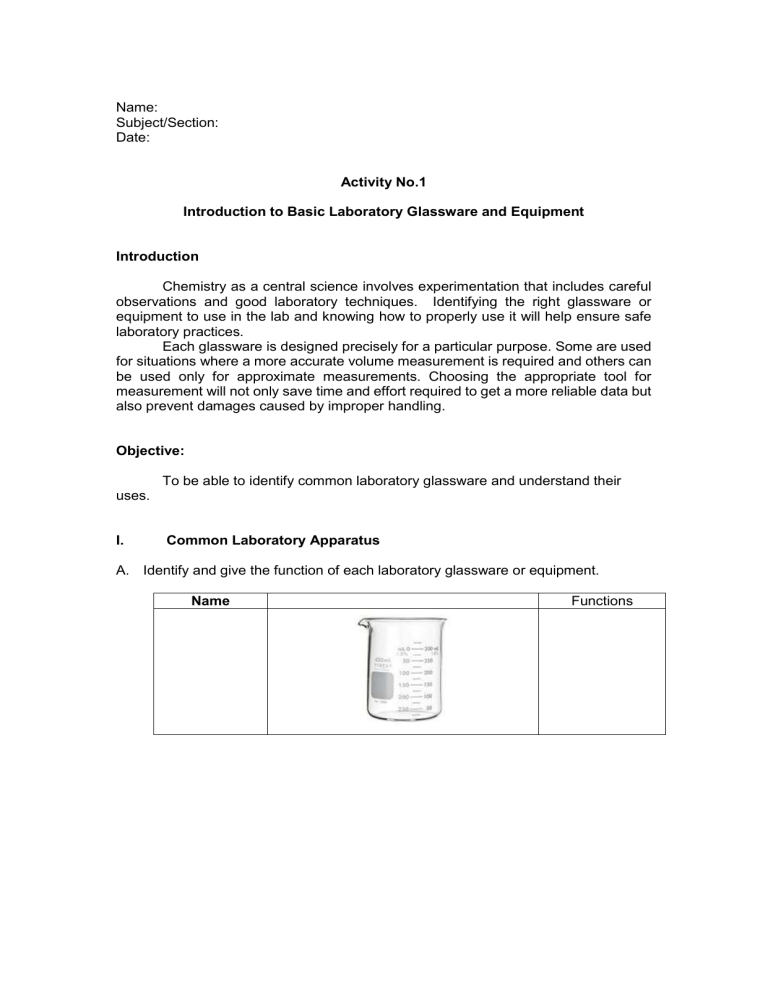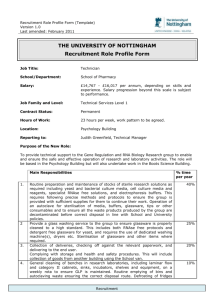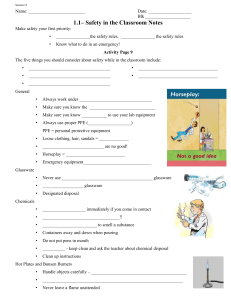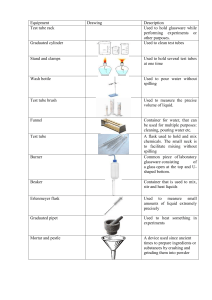
Name: Subject/Section: Date: Activity No.1 Introduction to Basic Laboratory Glassware and Equipment Introduction Chemistry as a central science involves experimentation that includes careful observations and good laboratory techniques. Identifying the right glassware or equipment to use in the lab and knowing how to properly use it will help ensure safe laboratory practices. Each glassware is designed precisely for a particular purpose. Some are used for situations where a more accurate volume measurement is required and others can be used only for approximate measurements. Choosing the appropriate tool for measurement will not only save time and effort required to get a more reliable data but also prevent damages caused by improper handling. Objective: To be able to identify common laboratory glassware and understand their uses. I. Common Laboratory Apparatus A. Identify and give the function of each laboratory glassware or equipment. Name Functions B. Answer the following questions: 1. What does TC on a glassware mean? Give 2 examples of glassware in the lab with a TC label. 2. Why is the zero mark located at the top in a burette? 3. Compare and contrast beakers and Erlenmeyer flasks discussing transfer of liquids and mixing. 4. Compare and contrast graduated cylinders and graduated pipettes discussing how they are used and how they are read. Which one is the less accurate glassware for volumetric measurements?



